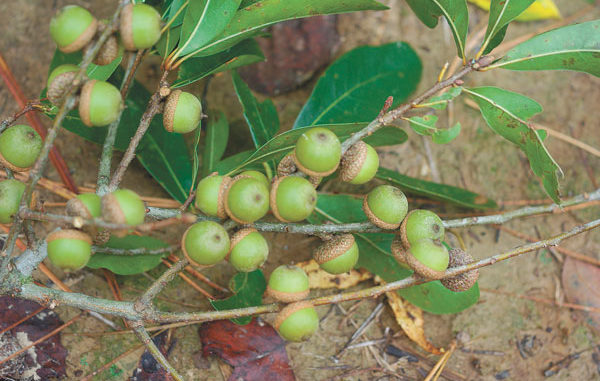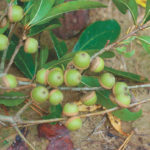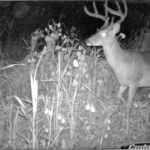
Husband of former MADD Louisiana executive director arested.
While Tropical Storm Lee put a damper on the opening of dove season, there is still much to be excited about. I visited Bowie Outfitters and took advantage of the tax-free weekend for guns, and ammo and there were plenty of others doing the same. No doubt the other local gun dealers did good business that weekend as hunters made final preparations for the 2011 season by taking advantage of this opportunity to save some money.
I made a foray to Clinton on Labor Day, and did hear some shooting on nearby property. It was a windy day, and the doves I saw were sitting tight on some tower wires and weren’t visiting my open areas.
While it was a little wet, I jumped on the tractor and did some cutting in preparation for the fall planting. With good soil moisture, now is the time to put in the winter food plots.
If you planned ahead for the fall season back in late spring or early summer, you might have some forage plots available for your early bowhunting outings, and even for some primitive and gun hunting, depending on when the first frost arrives this year. I incorporated joint vetch into my seed mix in April, and right now the deer are tearing it up. Deer began feeding in the strips in late July, and I have photographed both bucks and does with fawns feeding on the nutritious forage. Joint vetch is a legume, like beans, and has the good protein requirements that deer need.
I mixed this with soybean seed and wildlife sorghum. The soybeans did not do that well, and the hogs took care of the grain plants, although I was able to produce some seed for the doves and turkeys. The joint vetch growth was excellent, and it appears the hogs are not interested in it.
Next year I think I will mix the joint vetch with some partridge pea and Illinois bundle flower and see what happens. All three of these are legumes, again excellent forage for deer, and the seeds are readily eaten by the upland game birds.
My fall plantings will again consist of crimson clover, white Osceola clover and arrowleaf clover. I was much impressed with the arrowleaf clover and had enough moisture to keep the plants growing through June. Browse activity by the deer was high, but I did notice that the hogs would feed on the plants also. Again the protein levels provided by the clovers provide the deer with the necessary nutrition for good growth and development.
I am also leaving some sorghum strips standing, some of which do have seed heads that deer will eat. The problem, of course, with grain crops is the hogs. Feral hogs will pretty much tear up the grain forages and reduce the benefit for the targeted game species. One way to overcome this would be to put up a hog-proof fence around the field where the grain crops will be grown. With a good gate system, it could also be used as a trap to catch some porkers once the deer season is over. Deer and other wildlife would simply jump over the fence to feed on the forage.
My rye grass and Timothy grass will regenerate from the seed produced this spring, and I will include some mustard and turnips into the fall plantings.
Dr. Don Reed had an article in the August issue of Louisiana Farm and Ranch that discussed the idea of planting mayhaw trees in a food plot. Mayhaws produce fruit in the spring, and are readily eaten by deer and other wildlife species. Now why would one want to plant a tree that produces fruit in the spring and not during the hunting season? Deer management is a year-round proposition, and providing quality forage such as soft-mast fruit in the spring will keep the nutritional level on the habitat at a high level. Now is the time to be securing tree seedlings for planting this winter. It is also the time to be thinking about this long-term wildlife management work. Seedlings are available from the Louisiana Department of Agriculture and Forestry and from private nurseries.
Another tree that is very much worth incorporating into a wildlife food-plot program is the sawtooth oak. The trees that we have planted in our food plots produced many acorns this year, despite the drought, and the squirrels and deer have been working them over. Perhaps next month I will have a few new photos of the deer eating these acorns (cameras were set up on Sept. 9). Sawtooth acorns will attract the wildlife to your property in September, when they begin to fall, and can provide some bowhunting opportunity in early October.
Acorns, of course, are a high-quality food item that deer need. These high-carbohydrate foods enable deer to develop fat reserves and help maintain them during the winter and the intense breeding season. Maintaining a diversity of both red oak and white oak acorns is an important key to a deer-management program as well as hunting success.
While you may think the drought has taken its toll on the 2011 mast crop and that acorns are not going to be available, you need to get your binoculars and check out the trees. I took the accompanying photo of a small water oak branch on Labor Day, and as you can see this tree has a tremendous acorn crop. All of these acorns are good and, with the rain, will finish developing. There are both red oak (the water oak mast is especially high) and white oak acorns (white oaks and cow oaks).
If the deer disappear from the food plots and feeders, I would suggest you go check out the oak trees. There will be acorns for deer to eat this season, and as we know, deer will leave the plots and feeders and stay with the native mast, especially when the hunting pressure starts.
One major habitat activity currently being done on my 60-acre Clinton tract is the cutting of the pine timber on about 30 acres. While timber prices are not good, the pine timber had closed up and there was no browse for the deer. This cut will provide both food and cover for several years, and the big oak trees that have been left will have good sunlight now for mast production. Timber cutting is a must for a sound deer-management program. The big rain event did not create problems for the loggers, and this activity will be done in short order, plenty of time for things to settle down before the deer season. Develop a good wildlife timber program and work the plan; take advantage of the knowledge of a wildlife biologist and forester, and create some long-term deer habitat.
Congratulations to Ben Broussard from Sulphur and Megan Boles from Provencal. They were the 2010 Male and Female Youth Hunters of the Year.
With a new season beginning, our youth hunters, 15 years or younger, need to visit the LDWF and LOWA websites and participate in the 2011 Youth Hunter Registry Program and 2011 Youth Hunter of the Year Program.
There will be the usual big buck contests around the state this year. Bowie Outfitters will conduct its annual contest, which is open to anyone bagging a legal buck. The grand-prize winner is selected by a random drawing, so everyone who enters has the chance for the big prize. Louisiana Sportsman will conduct a contest at its show in Gonzales in March.
Turkey hunters need to check out the new dates that LDWF initiated at the September Commission meeting. I was thinking that I would get to hunt with my friend, Ken Mason, in Bossier Parish since this area was originally set to open a week later than our season, but upon further review, the department decided that two different opening dates was not good. Now the 2012 season is set to open statewide on March 24.
Keep in mind that what you do with your fall plantings could improve your turkey hunting success, so don’t put all your work into planting just for deer; the turkeys will be attracted to a food plot that has forage available for them.




